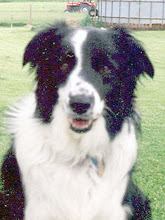The farmer dropped a bale of hay on the back porch this weekend.
The bale was green, tightly packed, and smelled oh so sweet.
"The second best hay I've made this year," he said.
His best bales came from a first-year alfalfa field and baled under ideal conditions.
"I didn't lose a leaf when baling," he said.
Living among hay fields, I've learned that hay making is both an art and science. A good bale doesn't just depend on sunny weather. It depends on daytime and nighttime temperatures, humidity, ground moisture, when it is raked, how long it is on the ground, and little bit of luck. Once out of the field, it is still curing, and storage becomes key.
The farmer, who has been making hay all of his life, can look at hay on the ground, and determine moisture levels. He can look at a bale and tell protein content. He knows without testing, that hay grown during times of great rainfall lacks the mineral content, and that drought hay packs in the minerals.
He talks of milking-making hay, and dry cow hay, and hay that is good for my fat ponies, and sheep hay.
I wonder if I can possibly gain all of this hay knowledge in my lifetime, or if I will just appreciate a bale that smells oh so sweet.
Tuesday, August 28, 2012
Subscribe to:
Post Comments (Atom)













No comments:
Post a Comment